When building a car in any style, it’s generally agreed upon that wheel choice/fitment is one of the most important details. If you’ve never purchased vintage aftermarket Japanese wheels before there can be a barrier to entry even from the way things are referenced or notated. When browsing/discussing wheels you may hear terms such as “12j, A type, 11b, PCD”. All of this wheel jargon can be intimidating when trying to purchase your first wheels or even in conversation with other enthusiasts.
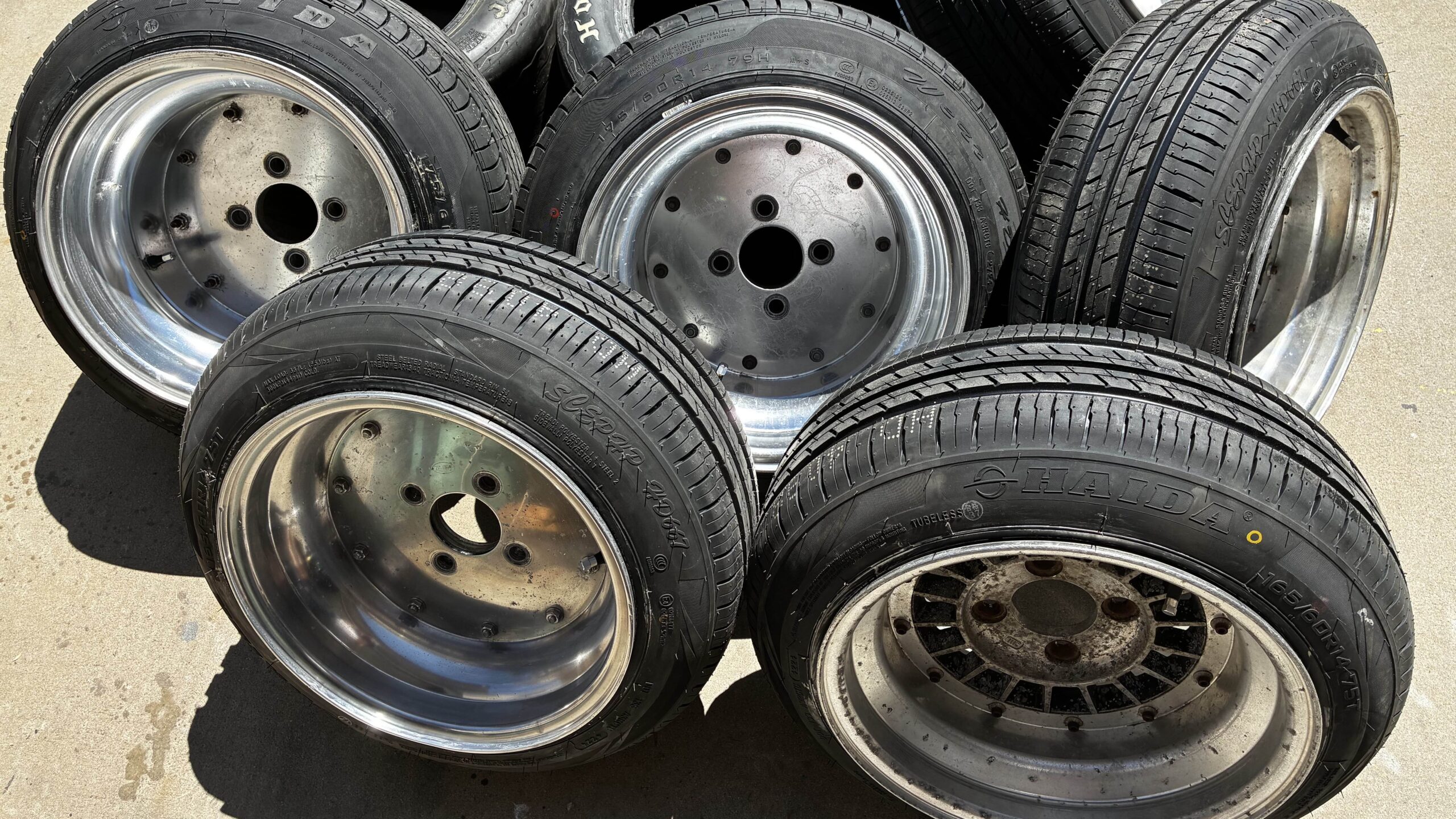
Glossary
| j | Technically the bead profile of the wheel, is synonymous with wheel width as it traditionally follows the number denoting the width |
| PCD | “Pitch Circle Diameter”, commonly referred to as “bolt pattern” in North America |
| Type | Inner barrel size used by some wheel manufacturers. This also determines the backspacing, the distance from the mounting surface to the back of the wheel |
| Offset | The wheel face’s mounting surface to the hub in relation to the centerline of the width |
Breaking Down the Specs
Starting with the simplest to understand “j” technically distinguishes the bead profile of the wheel however because virtually all passenger vehicles use wheels with this bead type, j is synonymous with the width of the wheel. Looking at the back of most wheels both OEM and aftermarket the width is marked in number of inches followed by the letter j. For example, 6.5j would have a section width of 6.5 inches wide between the bead surface. When measuring wheels yourself it is important to measure inside the bead as measuring overall width including lips is incorrect.
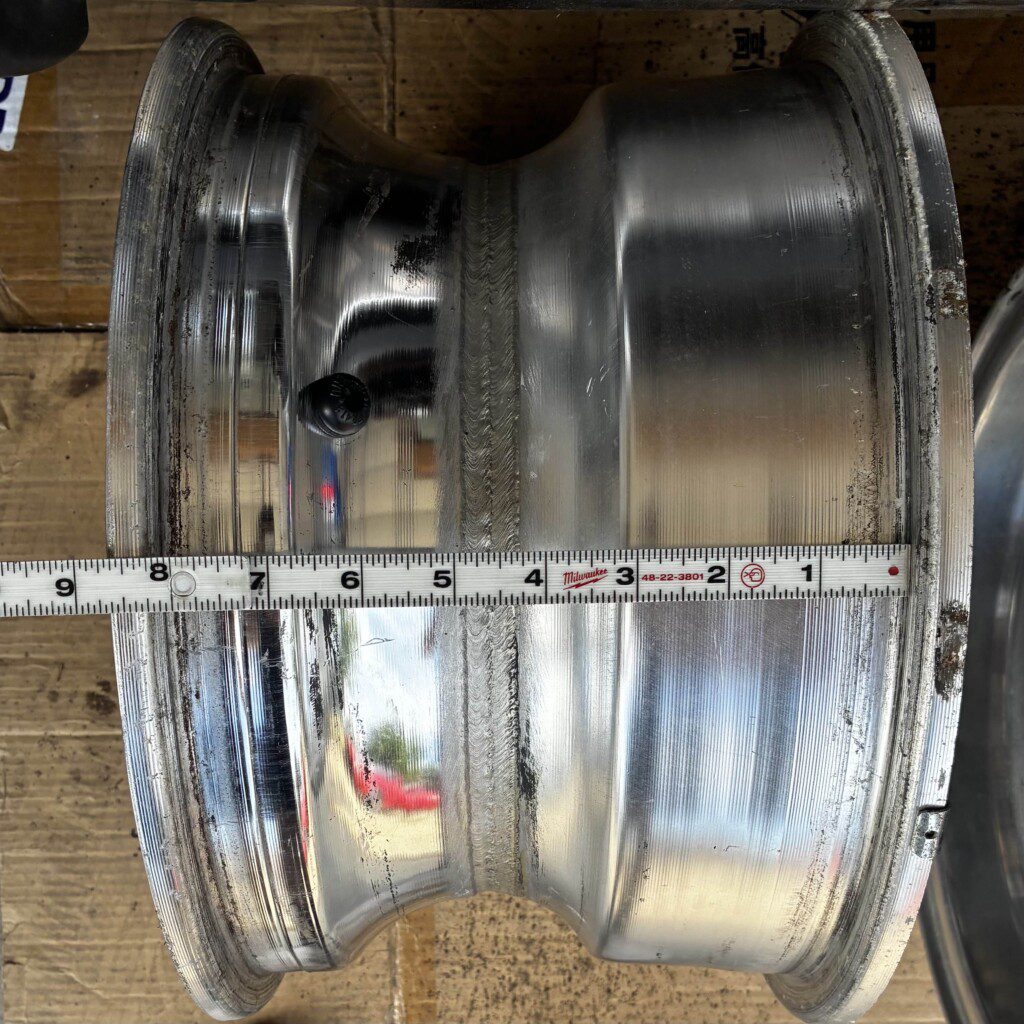
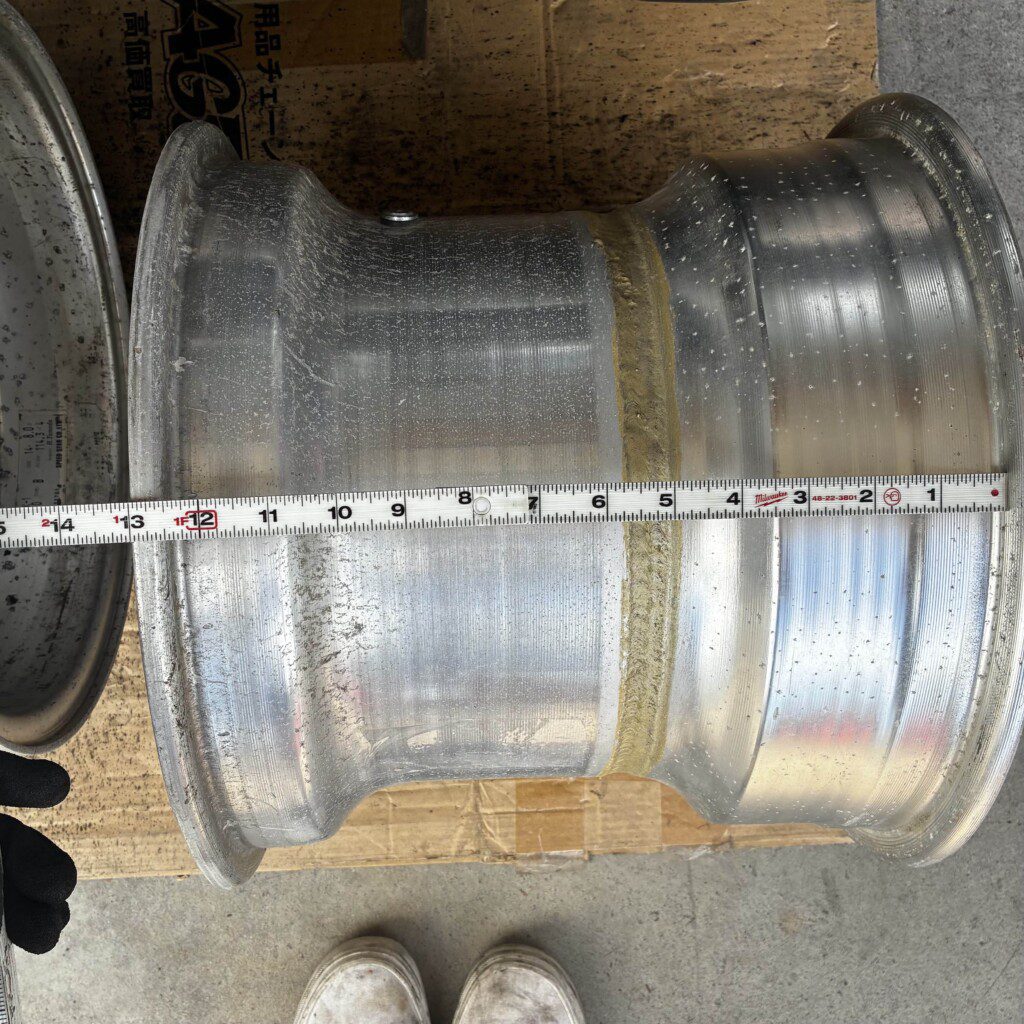
The next term, PCD is the diameter of the (imaginary) circle the center of the lug holes are drilled. For most kaido racer bases 114.3mm (4.5in) was used but other bases may use 100mm or 110mm. This measurement is sometimes paired with the number of lug holes, often dictated on auction as “4h” meaning 4 hole. If you’re looking at photos counting the number of holes in the wheel takes a fraction of a second so this is sometimes left out of a listing.

The most nuanced term of these is “type” which has been forgone in more recent times. For wheels that are commonly used on kaido racers such as SSR Mk1, Focus Racing, Techno Phantom, etc. many of these were sold using A type, B type, or C type as a standardized sizing. For these wheels “type” references the size of the inner barrel of the wheel. Wheels sold as “A type” will feature a 4” inner, 4.5” inner for B type, and 5” inner for C type. The size of the inner barrel changes the backspacing. When talking about wheels with these different types, you may hear people replace “j” with the letter type, for example, 12j B type > 12b.


Beyond this, the wheel faces used between the most popular options are all relatively similar in base offset. Using 7j A type as an example, the effective offset for SSR MK-1,2,3 is +0, in Focus Racing -2, and +2 in Volk Racing.
Comparing this to the modern three-piece wheel where the option for different “disc types” (face offset) for caliper clearance and many more barrel sizes makes calculating offset a modern necessity.
Putting this all together, due to the general uniformity in sizing the specific offset measurement for these vintage wheels means much less than for modern vehicles. If you had 8a MK1’s on a car you’d know that 9a would poke an extra inch, if you had less than an inch of space to work with, then you may consider 8.5a or 9b as a compromise as that would sit right in the middle of the previously mentioned sizes.
To help visualize this concept, here’s a practical example of how some different wheels fit using my 910 Maxima. You can see that the 7.5j A type and 8j B type wheels fit the fender the same, while 8j A type is an extra half inch of poke.

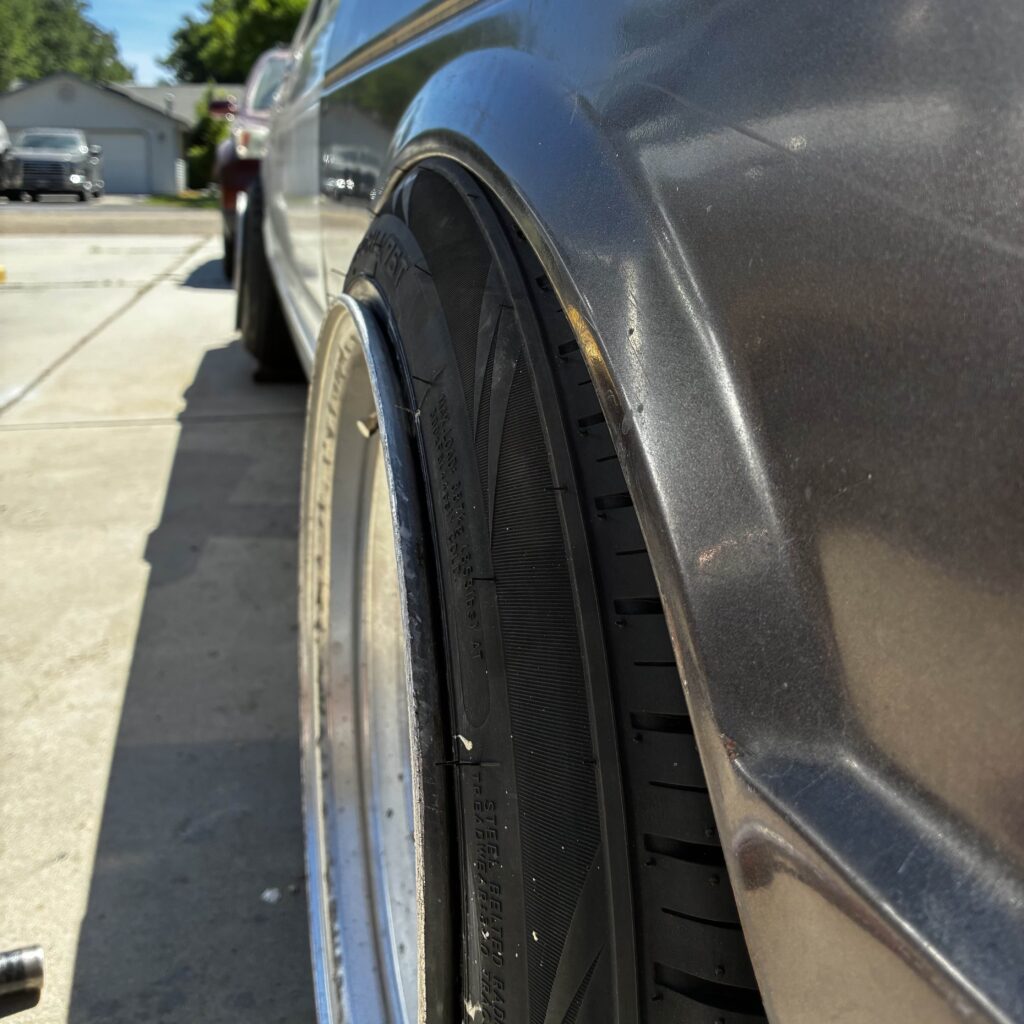
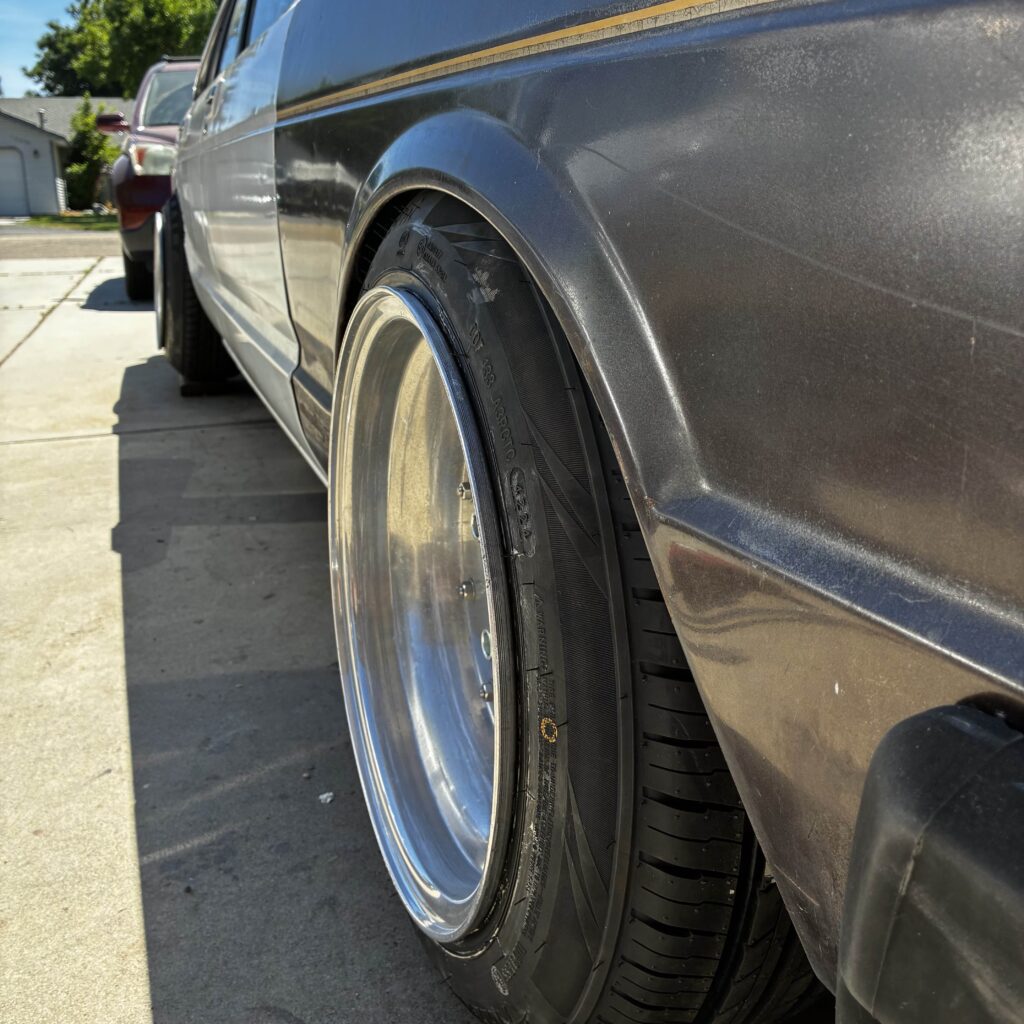
For those who like math or want to see all the numbers, we compiled the following chart from an old SSR advertisement. To add further context, this should be accurate for SSR MK-1,2 and 3. Wheels such as SSR Formula mesh would have approximately a -3mm difference in offset across the board, and XR-4 has a less linear variance, ranging from +1 to +3 depending on the specific size (at least based on our reference material).
Vintage SSR Wheel Sizes
| Width | A type 4in Inner Barrel | B type 4.5in Inner Barrel | C type 5in Inner Barrel | |||
|---|---|---|---|---|---|---|
| Lip width | Offset | Lip width | Offset | Lip width | Offset | |
| 6.0J | 1.5″ | 13 | – | – | – | – |
| 6.5J | 2″ | 7 | 1.5″ | 19 | – | – |
| 7.0J | 2.5″ | 0 | 2″ | 12 | 1.5″ | 25 |
| 7.5J | 3″ | -6 | 2.5″ | 6 | 2″ | 19 |
| 8.0J | 3.5″ | -12 | 3″ | 0 | 2.5″ | 13 |
| 8.5J | 4″ | -19 | 3.5″ | -7 | 3″ | 6 |
| 9.0J | 4.5″ | -25 | 4″ | -13 | 3.5″ | 0 |
| 9.5J | 5″ | -31 | 4.5″ | -19 | 4″ | -6 |
| 10.0J | 5.5″ | -38 | 5″ | -26 | 4.5″ | -13 |
| 10.5J | 6″ | -44 | 5.5″ | -32 | 5″ | -19 |
| 11.0J | 6.5″ | -50 | 6″ | -38 | 5.5″ | -25 |
| 11.5J | 7″ | -57 | 6.5″ | -45 | 6″ | -32 |
| 12.0J | 7.5″ | -64 | 7″ | -51 | 6.5″ | -38 |
| 12.5J | 7″ | -44 | ||||
Generally without a sticker or measurement of the wheel its difficult to say with 100% certainty what the size of the inner or outer barrel of a wheel is. SSR MK1 (and possibly others) later added the letter demoting the type to the end of the PCD stamp to help with this issue.

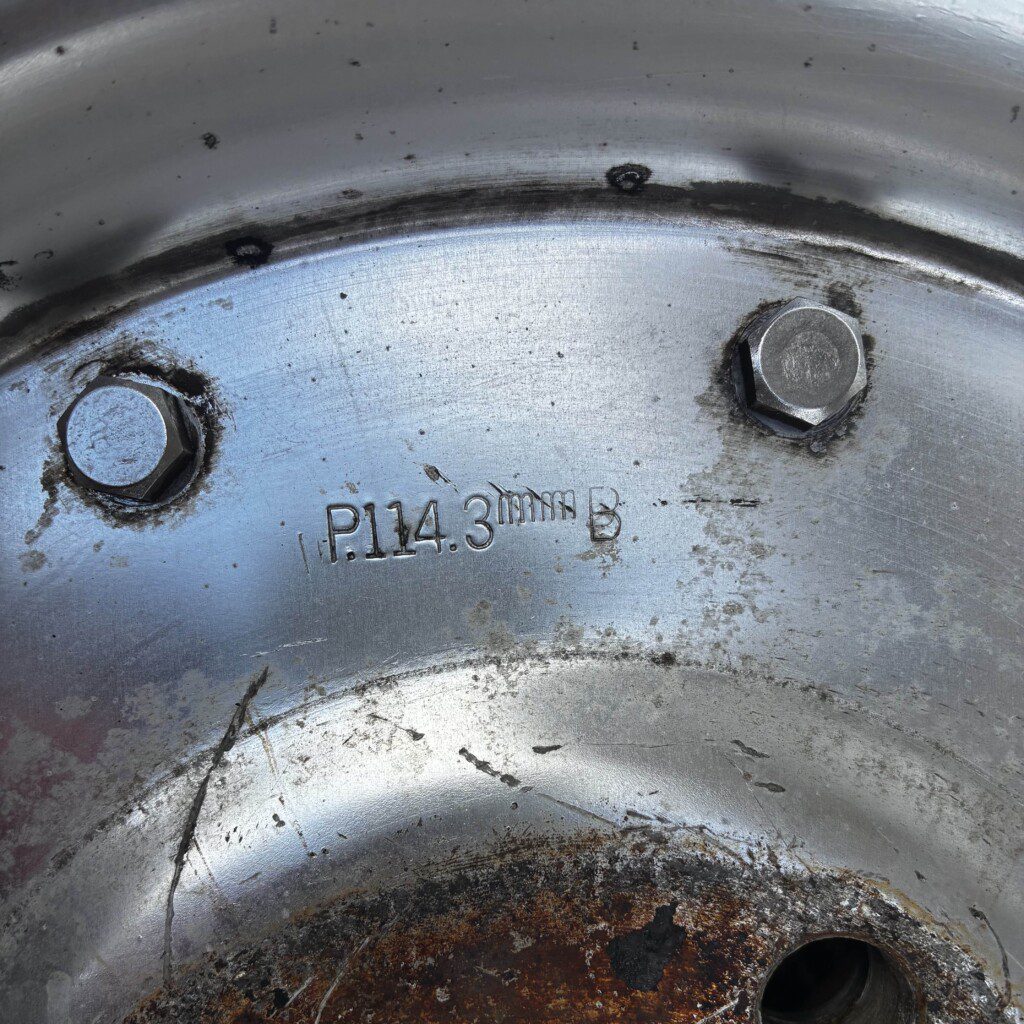
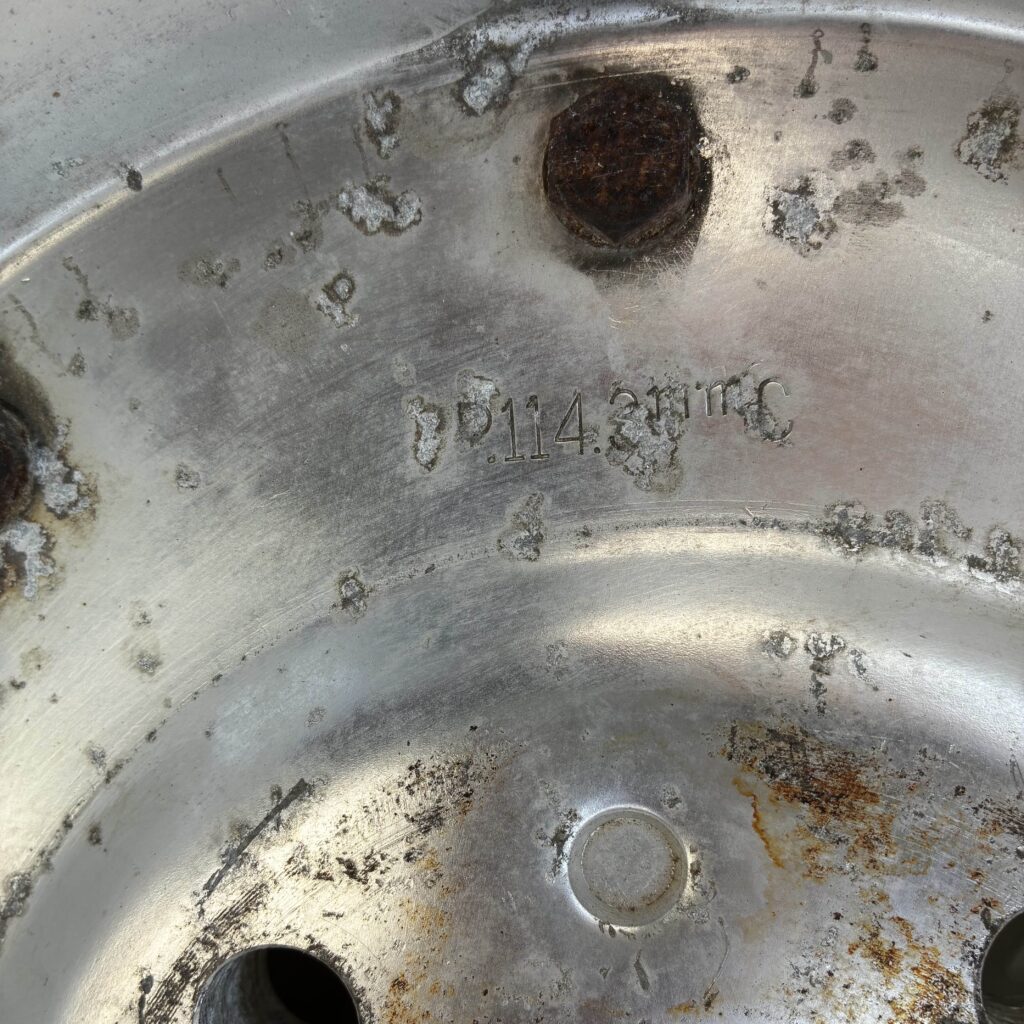
Another thing to note is that “early” SSR wheels featured simple stickers on the inner barrel showing width, pcd, and inner barrel type. From what I was able to find, there were 2 different variants of these earliest spec stickers used in the 80’s. Seemingly made of paper these aged very quickly and are often no longer legible (or even present).
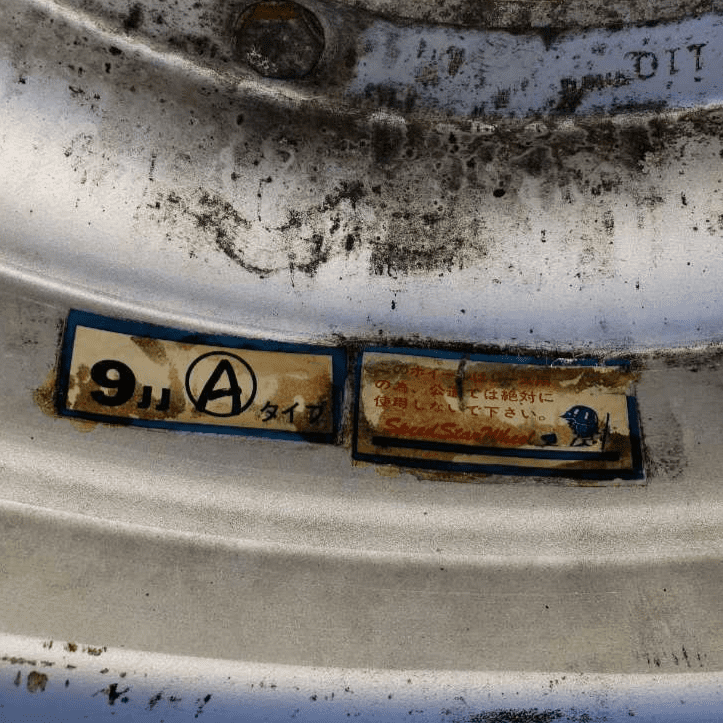

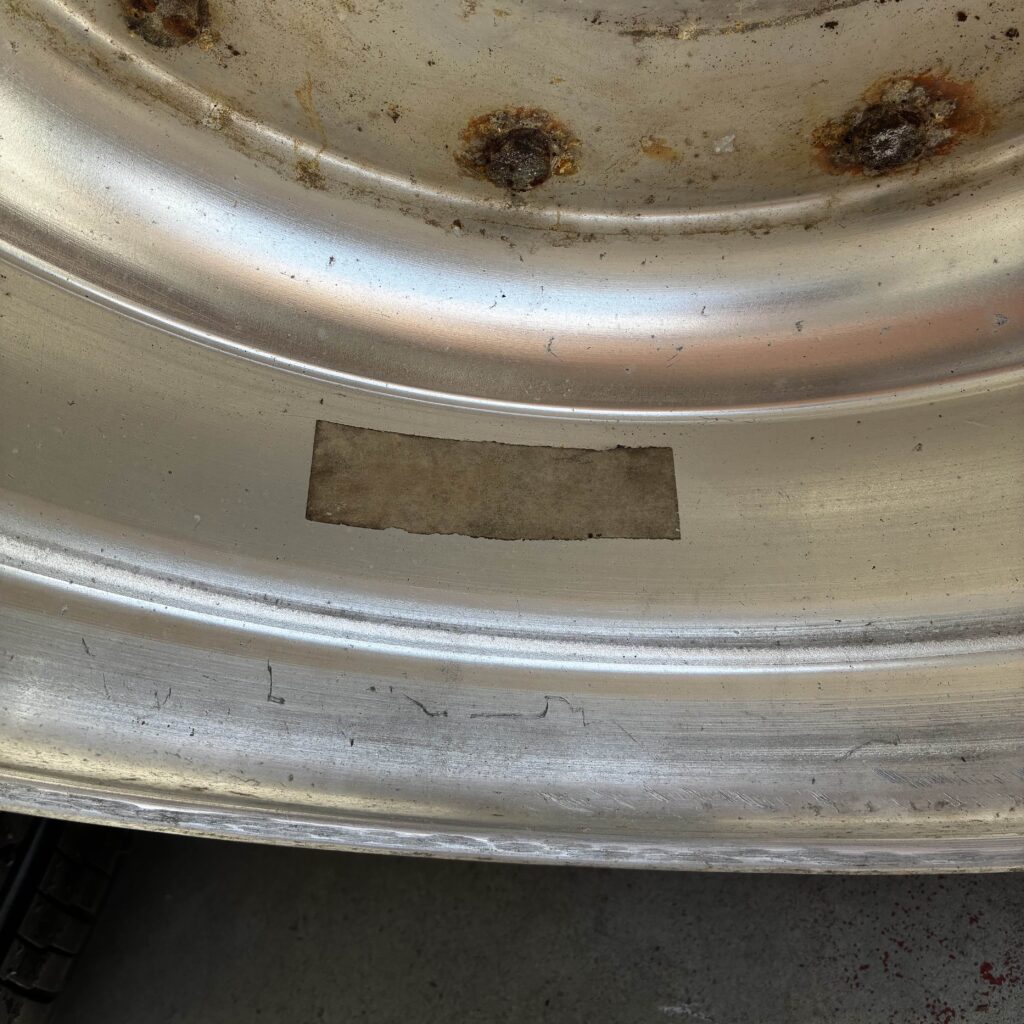
These wheels also included a build date sticker (notated year/month) near the outer bead. It seems that generally only the build date sticker has stood the test of time as the tire protects this from the elements. From the examples in my own collection and examples online it seems these were used through the 80’s and into the 90’s.


In the 90’s this was changed to the following spec sticker which seemed to use a similar material to the newest/current sticker. From my research these wheels still included the build date sticker.
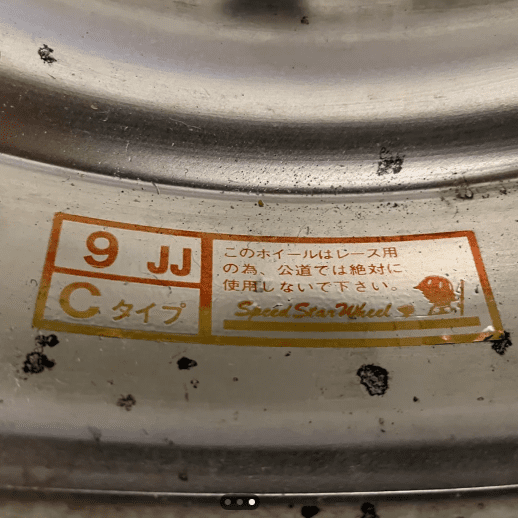
All of the stickers above were later replaced by a much more detailed sticker which even includes the inspectors name.
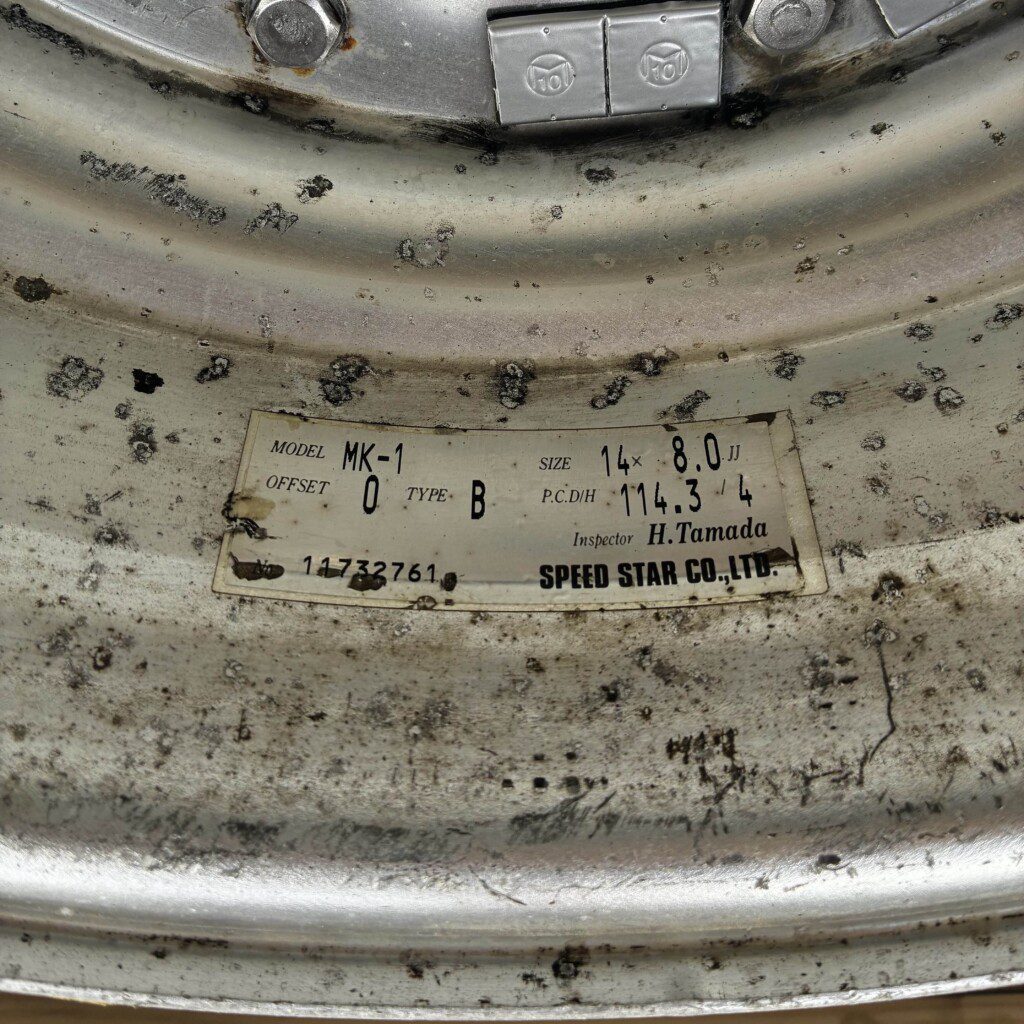
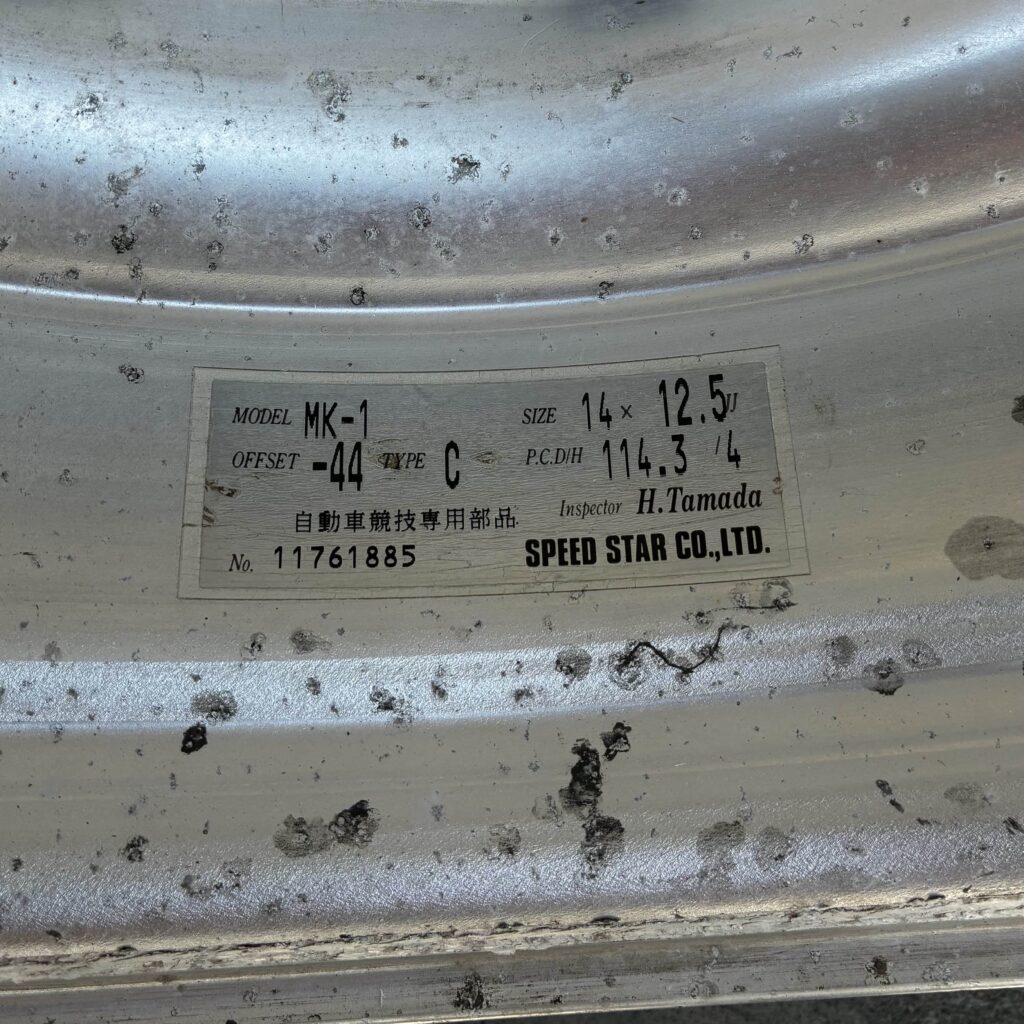

Pivoting back to the specs of wheels, understanding the different barrel sizes make it simpler to figure out exactly what size you want. While most touring cars with flares will generally run 10a in the front and 12a in the rear, a simpler car would need more specific specs. Another example is that most 12.5in SSR’s you’ll find for sale are C type, which means they poke (extrude from the fender arch) the same amount as 11.5a, but with an extra inch of barrel under the car.
Using a size chart can also be a good reference for buying widened steel wheels. Since steelies are banded (widened with a new steel ring welded to the outer barrel) the offset calculations become much more helpful. Understanding how different stack up to an SSR wheel should help with figuring out what does/doesn’t fit your build.
BONUS: Racing Tire Sizes
If you’re in the market for 12j or wider wheels, your next challenge will be finding tires to put on those wheels. One option is to import Shibatire but you’ll also find that most kaido racers used actual racing tires on their cars.
Whether you are looking to importing old tires or finding new racing tires the measurements on the sidewall are not section width x aspect ratio as with street tires. With racing tires these are measured by tread width x height in either millimeters or inches (depending on where the tires are manufactured). For example Liberty Walk tires come in 245/525/14 which is telling you that they measure 245mm wide on the tread patch (which runs larger than a street tire) and 525mm tall (approximately 20.6 inches). Another example would be Hoosiers which would notate the size as something like 10x21x14 or 10 inches wide, 21 inches tall, and for a 14 inch diameter wheel.
Note that racing slicks are almost never road legal and old tires can be dangerous, especially when mounted on a wheel wider than the tire, and should not be driven on public roads. While you might see cars in Japan running vintage Dunlop and Advan tires, some of these tires are now 30-40 years old. Some of the modern 14-inch tires are Shibatire (that we mentioned earlier), Liberty Walk’s LB FIVEX 245/525-14, Colin Project 225/40-14, and Banzai Sports BRE1988 230/525-14.
